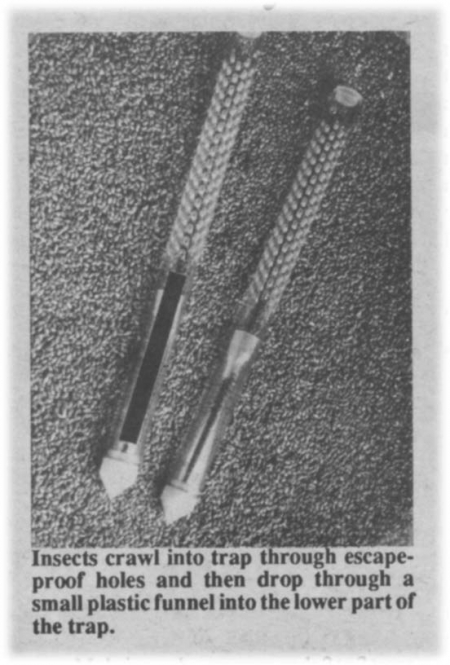
"Insects get inside but grain doesn't," says Al Mohring, manufacturer of Grain Guard, an insect-detector that eliminates the need to screen through grain samples for insects and makes it easy to detect insect problems early on before they become serious.
The 1-in. dia. by 15-in. long clear probe is made of unbreakable plastic. Insects fall or crawl into the trap through escape-proof holes and then drop through a small plastic funnel into the lower part of the trap. The trap is buried 3 to 6 in. down into grain near the top of the bin. Mohring says that's where you'll find the highest concentration of insects since they "migrate" toward the top where there's more air.
The trap is baited with a bit of ground-up grain although insects willingly crawl into it anyway, says Mohring, since they're always looking for air space.
"You just bury the trap in the grain and wait a few days. It detects insect problems early because it attracts insects from over a large area. Other methods can detect serious insect infestations -- such as taking a grain sample and sifting through it -- but it's difficult to detect an insect problem early on with that method. Using Grain Guard, which was invented by a professor at the University of Wisconsin, you can quickly find out the identity, location and population density of bugs in grain, including beetles, grain borers, weevils, and other insects," says Mohring, who recommends 2 to 3 traps per 7,000 bu. bin. Once they're in place he says they should be checked about every other week. Bugs can be easily dumped from the trap by removing snap-on end cap.
